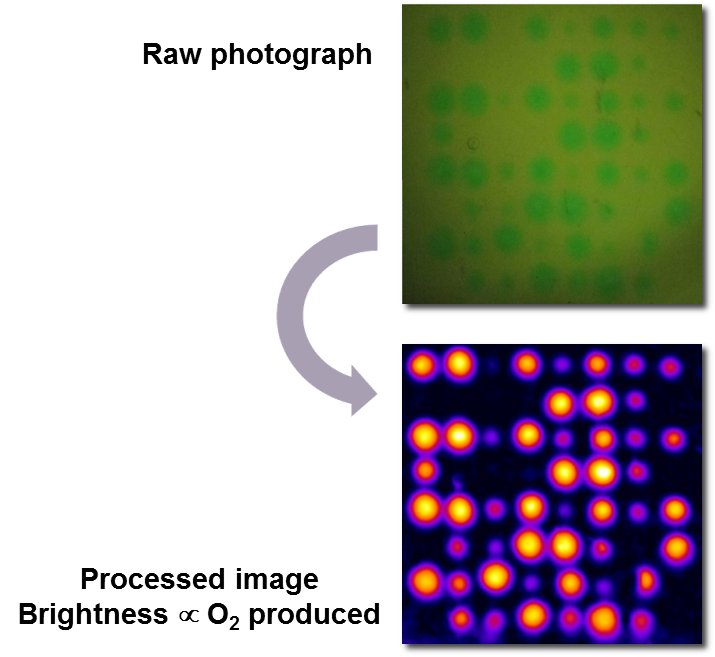Experiment
The HARPOON Project was established by Professor Shannon Stahl and his group at the University of Wisconsin Madison. The HARPOON project is a distributed research program that was created to explore electrochemistry and catalysis in the context of solar fuels. (Literature on the experiment is available in the Resources Section) The assay created assesses mixed metal oxides based on their ability to produce O2 under an applied potential. OER is imaged using a stainless steel mesh coated with a commercially available, dual chromophore fluorescent paint. One of the chromophores changes color in proportion to the partial pressure of oxygen. The mesh is placed above the electrode bearing an array of possible catalysts, and the electrode is biased in a deaerated electrolyte solution in the dark.
An inexpensive constant-current power supply is used to drive OER. During the electrolysis, the mesh is illuminated with 400 nm light from a commercially available UV-LED flashlight. The emission is recorded at several time points using a digital camera. The fluorescence intensity correlates with the catalytic activity of the materials below it. Processing of the digital images gives a representation of the relative activity across the array, enabling many catalysts to be screened in parallel. Reference catalysts are included in each screen to ensure the validity of comparisons across different electrodes and across data collected by different researchers.


